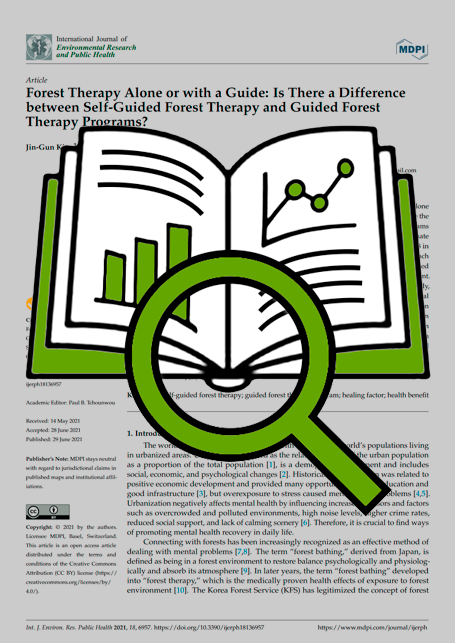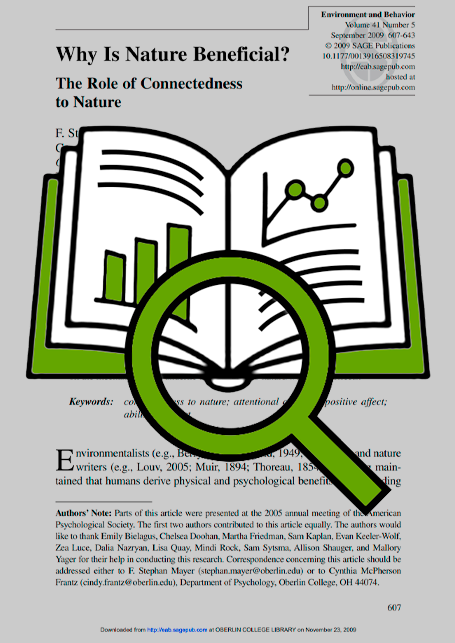Connect with Nature
More and more of us are environmentally aware, socially attuned and seek balance among positive personal, community and worldwide outcomes. We value personal development, access to alternative healthcare, and engagement in a sustainable economy as pillars of a healthy and ecological lifestyle. Connecting with nature is a powerful part of this way of life and Guided Forest Therapy is a safe and effective way to do it.

What is Forest Therapy?
The roots of Forest Therapy are in the health practice of Forest Bathing which developed in the 1980’s in Japan where it is called Shinrin-yoku. Guided Forest Therapy has advanced through research and practice since then to become an important way to connect with nature for improved mental and physical health.
Why “Guided” Forest Therapy?
According to a recent study, spending at least 120 minutes a week in nature is associated with good health and wellbeing. Some benefits can be gained by simply venturing out alone. But potentially deeper, more transformative experiences are also within reach as part of Guided Forest Therapy.
Forest Therapy Alone or with a Guide: Is There a Difference between Self-Guided Forest Therapy and Guided Forest Therapy Programs?
Jin-Gun Kim and Won-Sop Shin

“There are generally two types of forest therapy. One is to walk or view the forest alone without a guide, and the other is to be accompanied by a guide. This study aimed to investigate the healing factors and health benefits of self-guided forest therapy and guided forest therapy programs and examine the differences in characteristics between interventions.”
“Thirty-seven undergraduate students participated in a randomized experiment (19 in the self-guided forest therapy and 18 in the guided forest therapy program). Among the typical differences, the self-guided forest therapy group mentioned more keywords related to introspection than the guided forest therapy program group. On the other hand, the guided forest therapy program group mentioned more keywords associated with the change of emotion and social interaction than the self-guided forest therapy.“

About NFTC
Nature and Forest Therapy Canada (NFTC) is the foremost association of Nature and Forest Therapy Guides in Canada. NFTC is made up of members who are trained and accredited by the global Association of Nature and Forest Therapy (ANFT) and the Global Institute of Forest Therapy & Nature Connection (GIFT). You can find guides across Canada using the Guide Directory Map here on the NFTC website.

NFTC can help you learn more about Guided Forest Therapy services in your community.
CONTACT US
For Information about Forest Therapy
Resources & Research
More and more research shows that connecting with nature is an important part of a healthy lifestyle.
“A new study finds quantifiable evidence that walking in nature could lead to a lower risk of depression.
Specifically, the study, published in Proceedings of the National Academy of Science, found that people who walked for 90 minutes in a natural area, as opposed to participants who walked in a high-traffic urban setting, showed decreased activity in a region of the brain associated with a key factor in depression.”

Repairing emotional isolation by reawakening deep nature connection
– Jon Young | TEDxGrandPark
“Jon Young is a naturalist, wildlife tracker, peacemaker, author, storyteller, and a leader in the field of nature-based community building for 36 years. Jon’s research on the significant impact of nature on wellbeing has influenced thousands of people worldwide. Jon delivers a refreshing perspective on how we can expand our awareness of nature to reawaken ancient, hardwired skills to grow our connection with each other and create more harmony in the world.”

We are all connected with nature
– Nixiwaka Yawanawa | TEDxHackney
“We believe that in the forest there are lots of spirits. When a Shaman, for example, goes to take a plant in a forest, he asks the plant “I will take you, I will use you to heal someone” because İf he doesn’t say anything, the plant has no effect. The plant has effect when the Shaman says, when the Shaman asks that I am going to use you to heal my people. And right now, our forest has been disappearing because of many big projects of government for example mining and logging. It is really hard for us to protect our forest.”

Spending at least 120 minutes a week in nature is associated with good health and wellbeing
– Mathew P. White, et. al.

“Spending time in natural environments can benefit health and well-being… We examined associations between recreational nature contact in the last seven days and self-reported health and well-being. … Compared to no nature contact last week, the likelihood of reporting good health or high well-being became significantly greater with contact ≥120 mins.”

Why Is Nature Beneficial?The Role of Connectedness to Nature
– F. Stephan Mayer, Cynthia M Frantz, Emma Bruehlman-Senecal and Kyffin Doliver

“Three studies examine the effects of exposure to nature on positive affect and ability to reflect on a life problem. … In all three studies, exposure to nature increased connectedness to nature, attentional capacity, positive emotions, and ability to reflect on a life problem … analyses indicate that the positive effects of exposure to nature are partially mediated by increases in connectedness to nature and are not mediated by increases in attentional capacity.”
